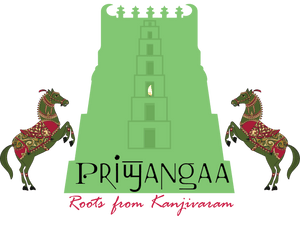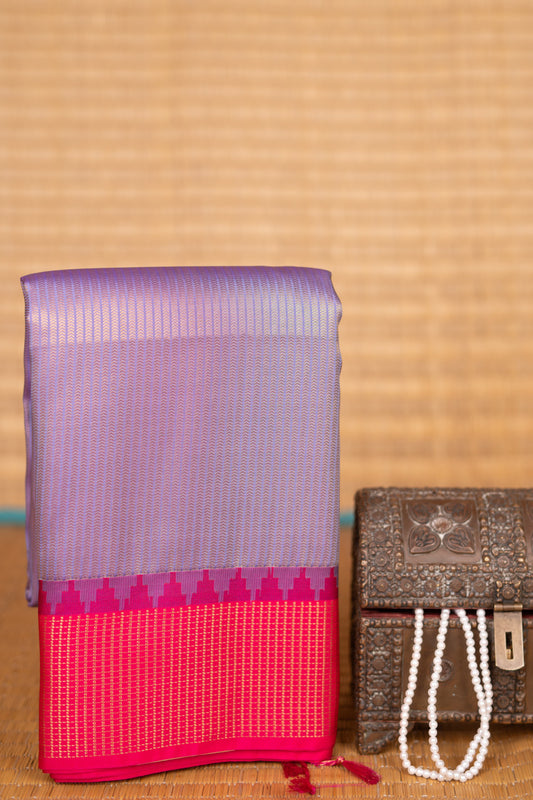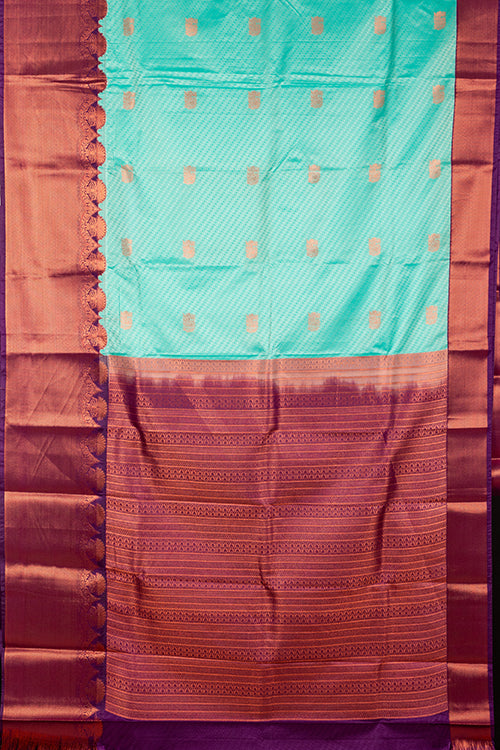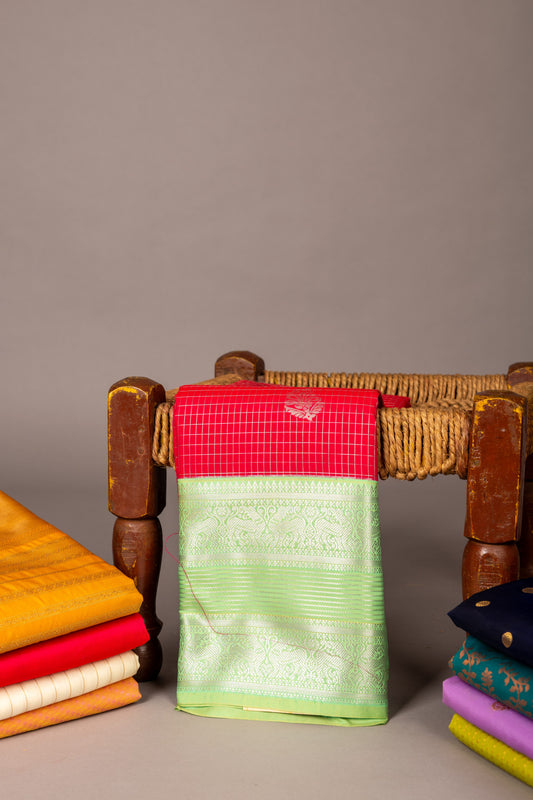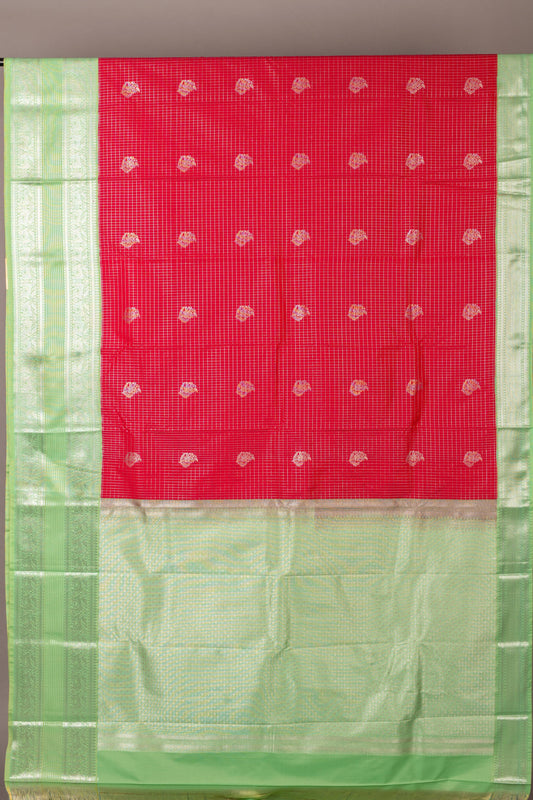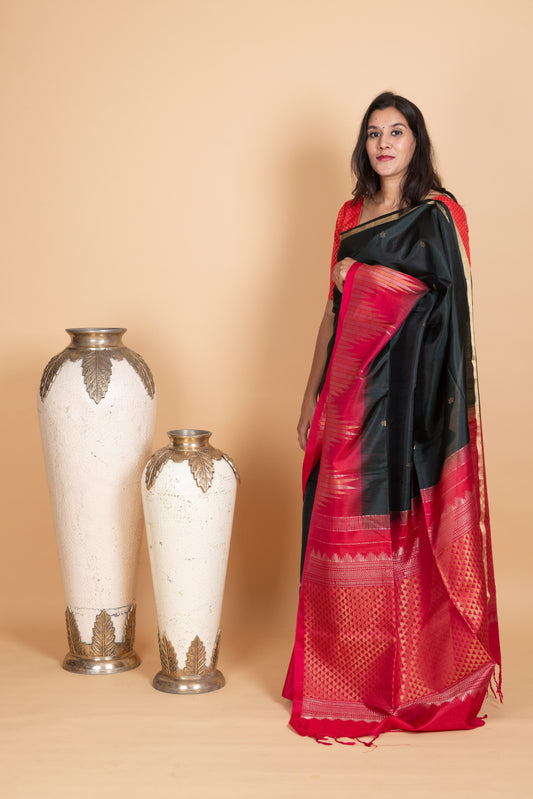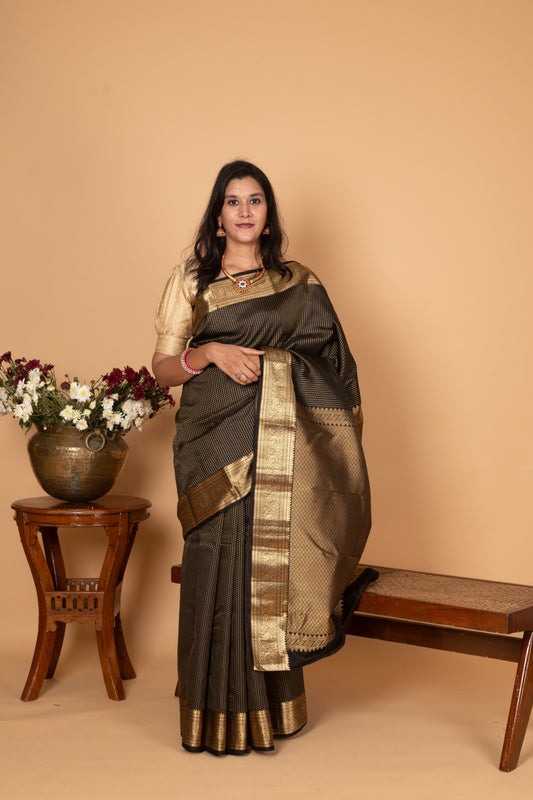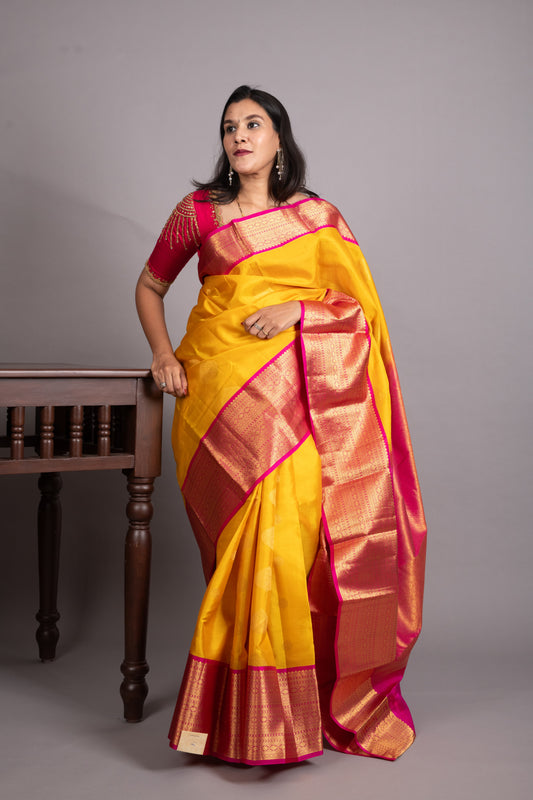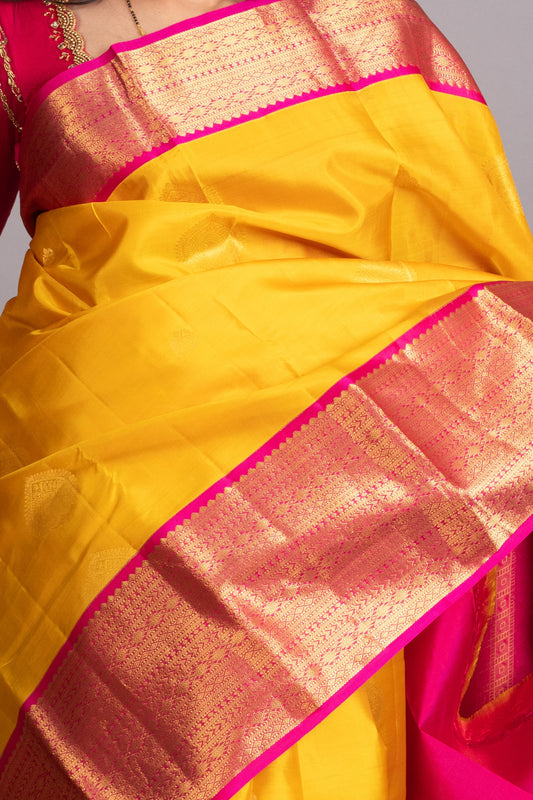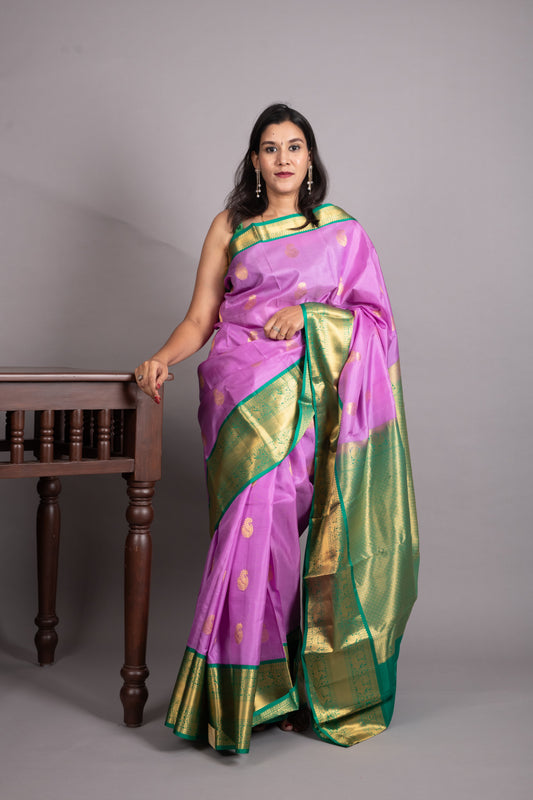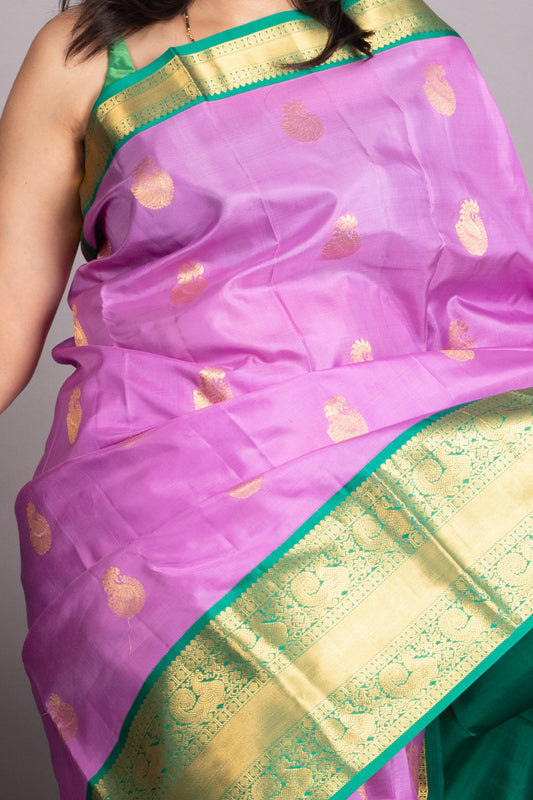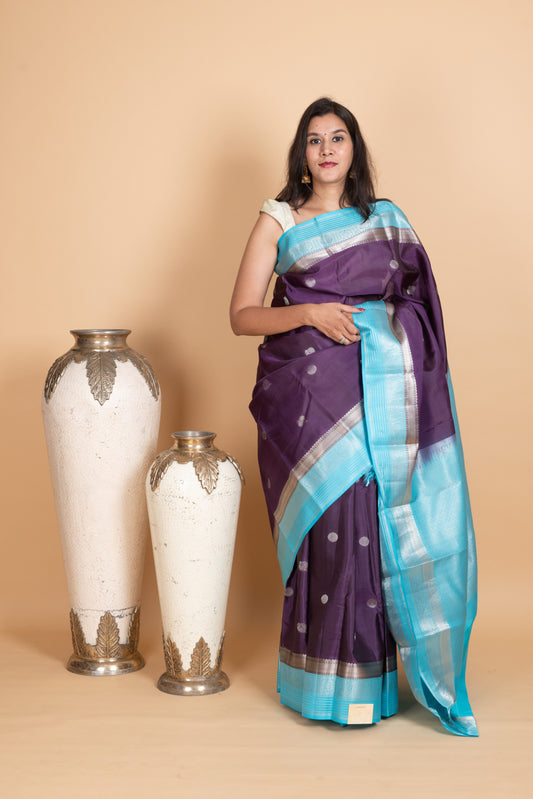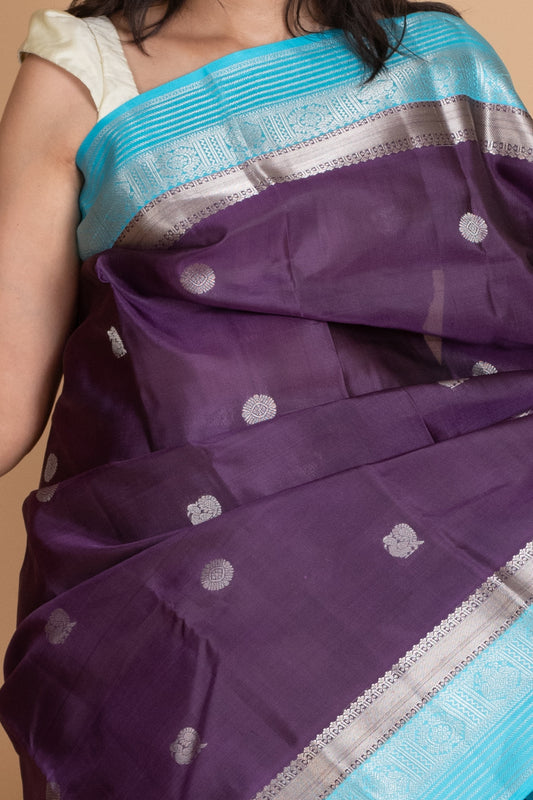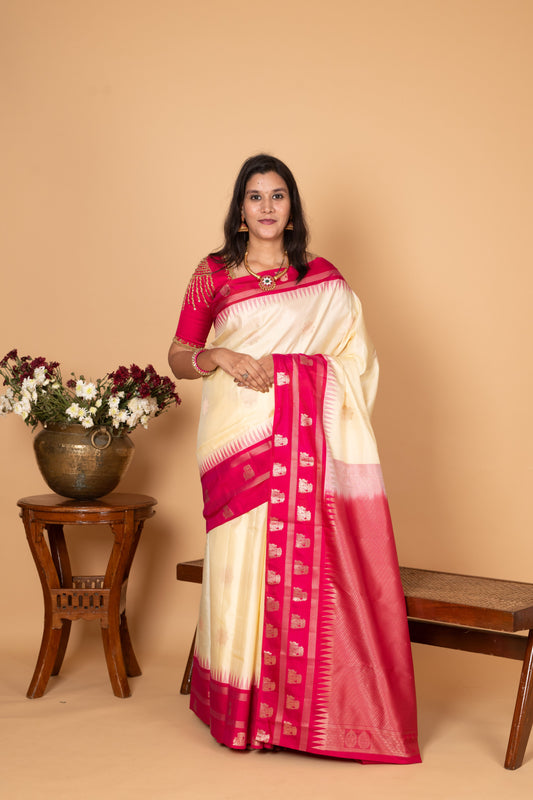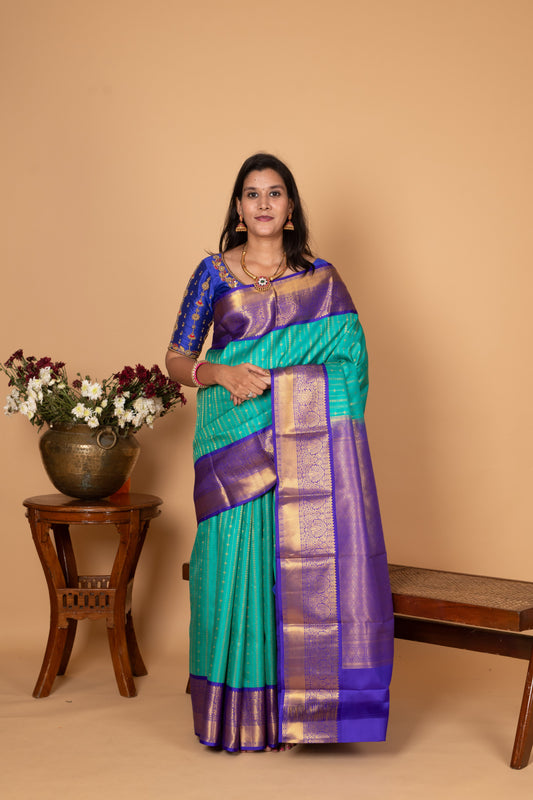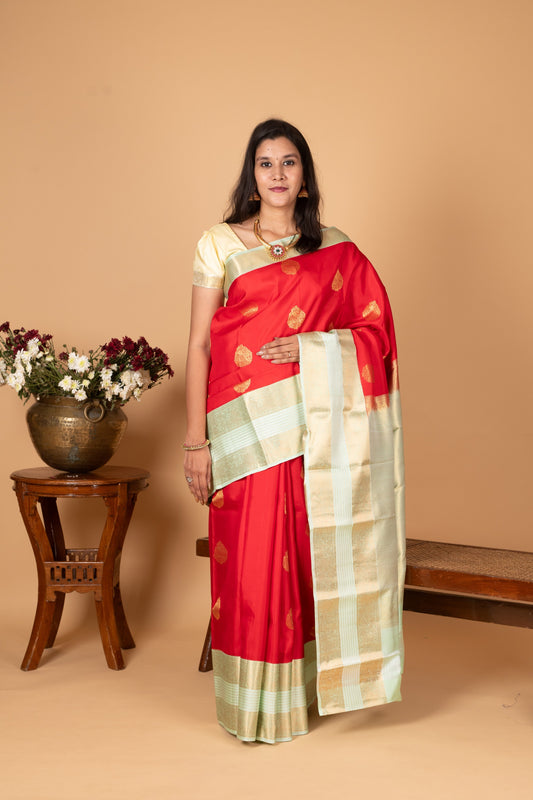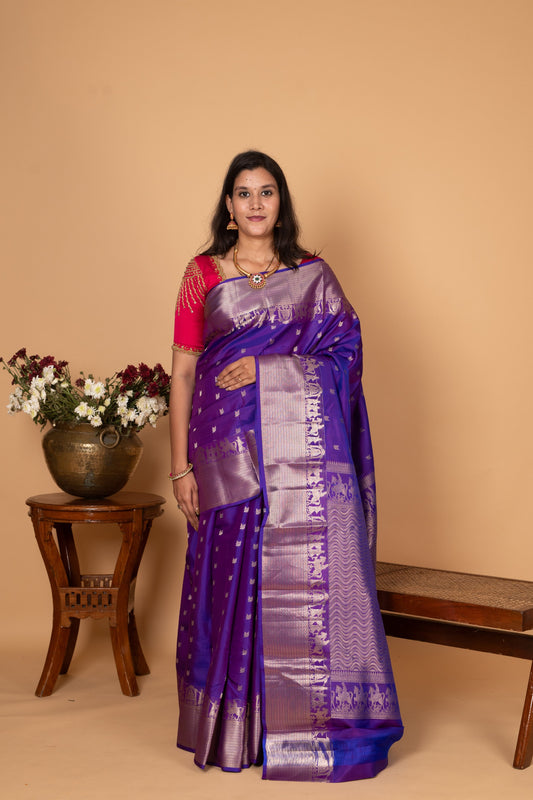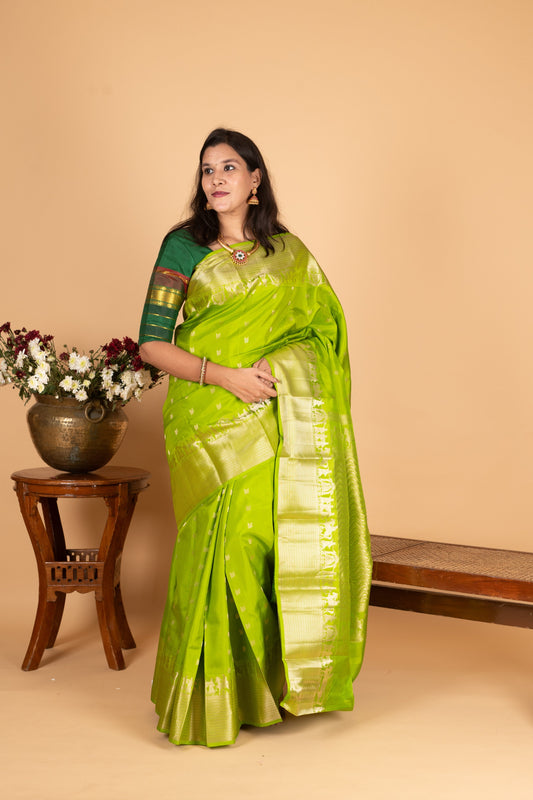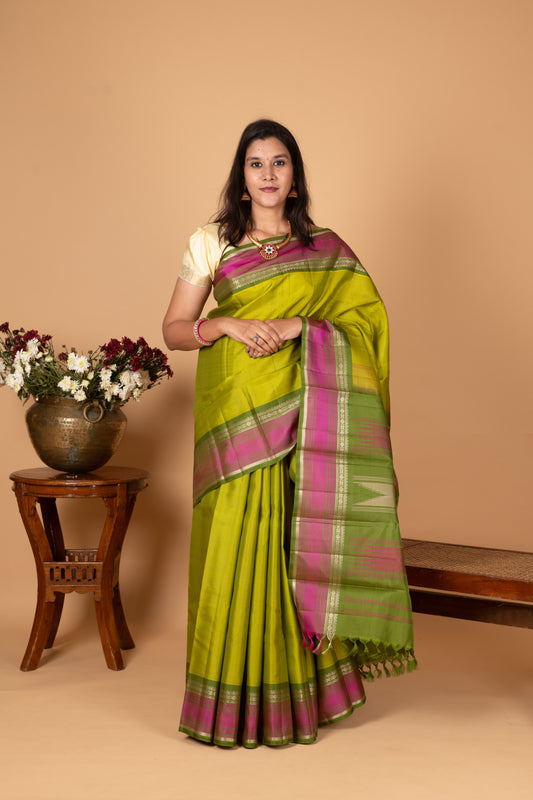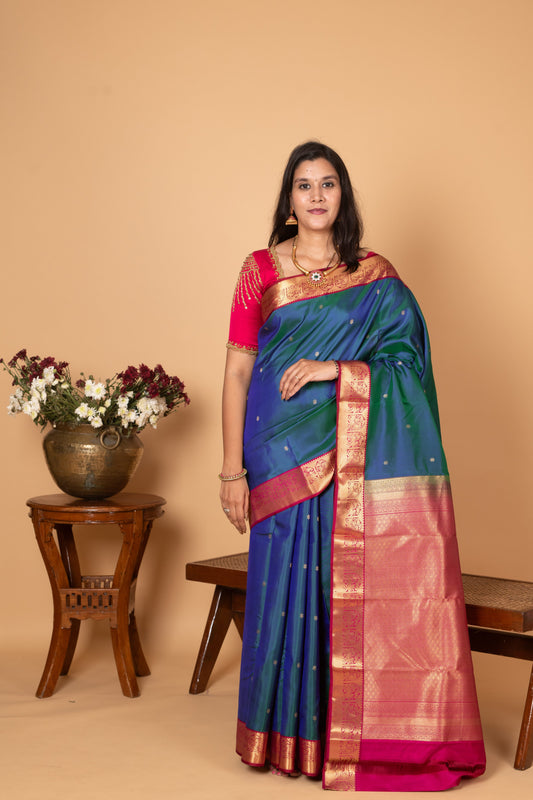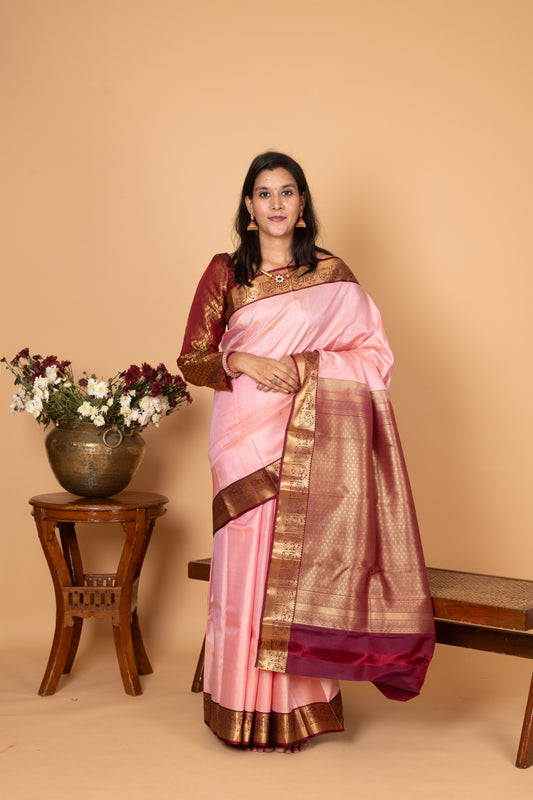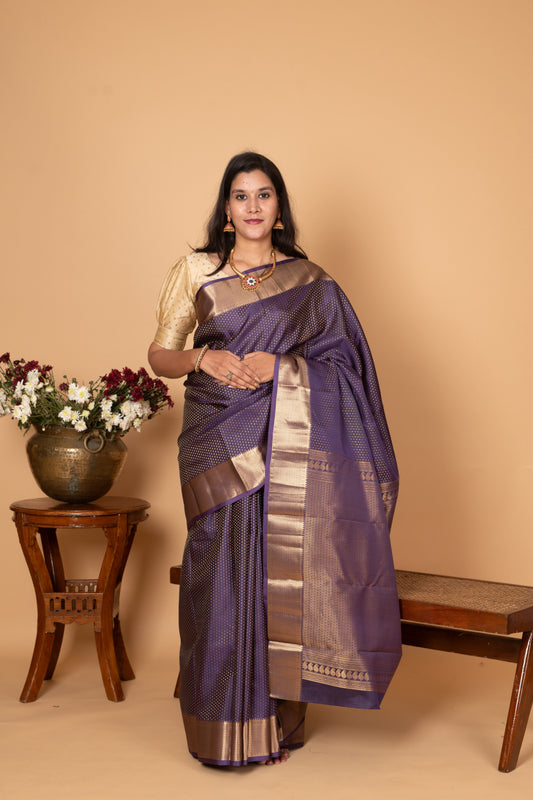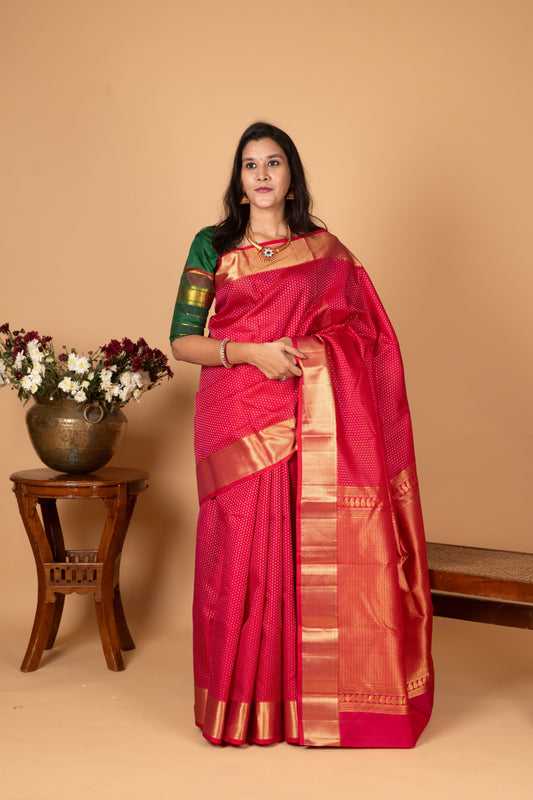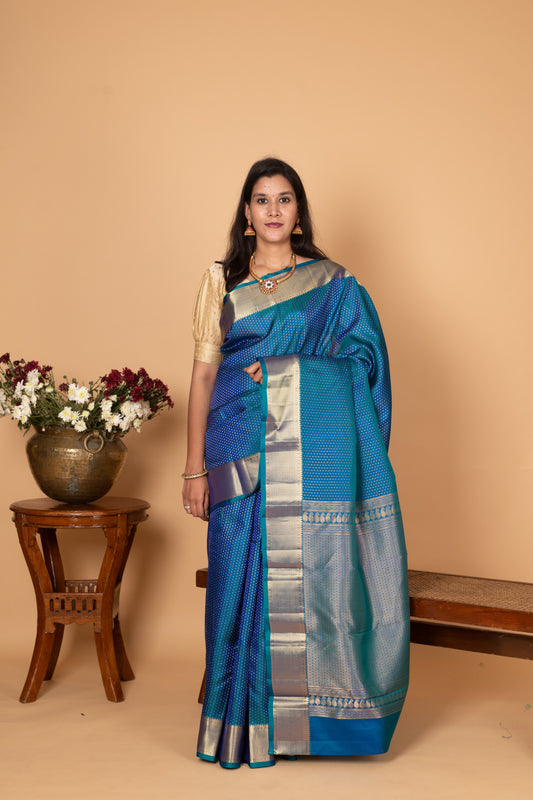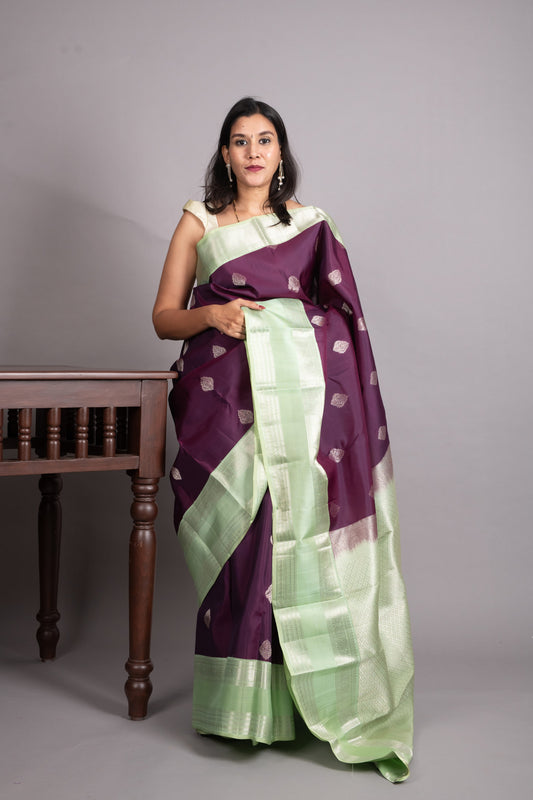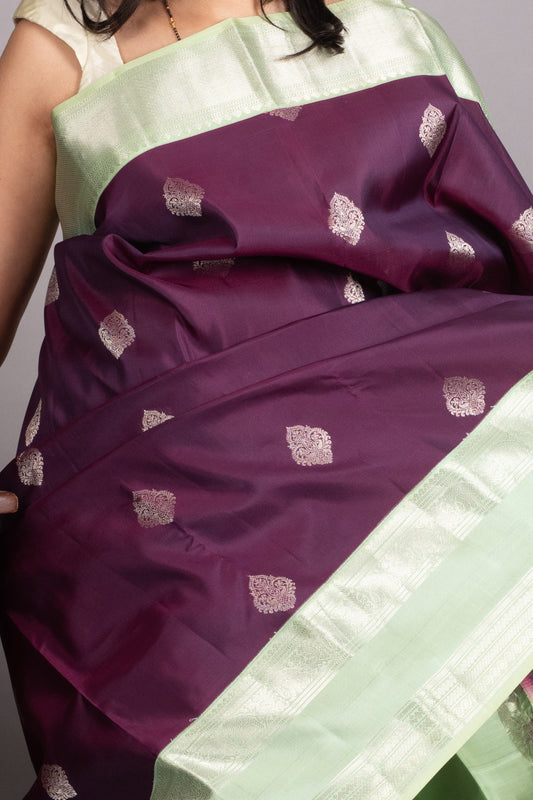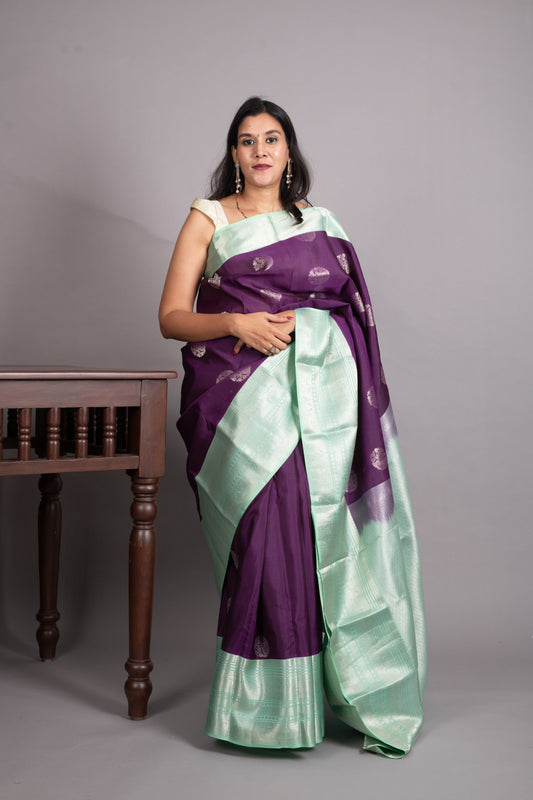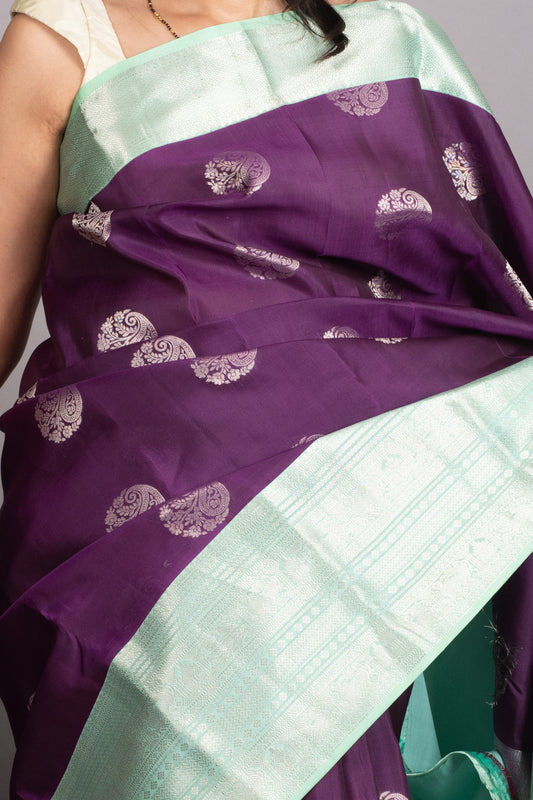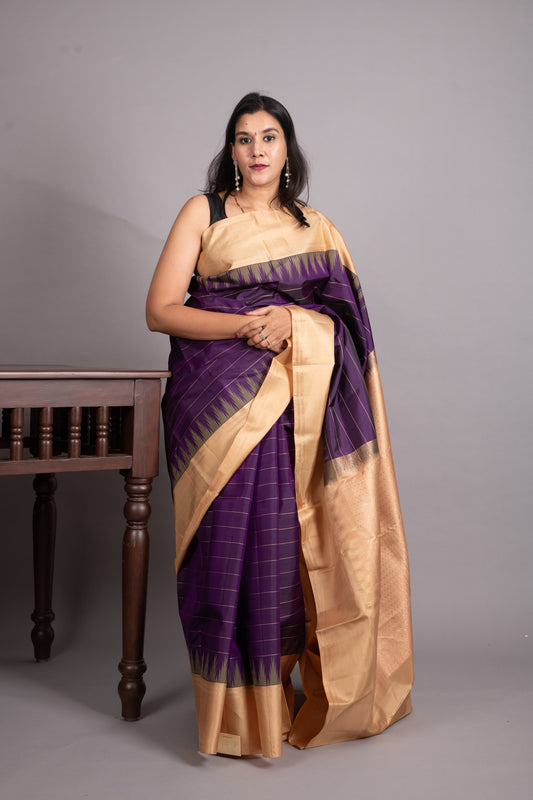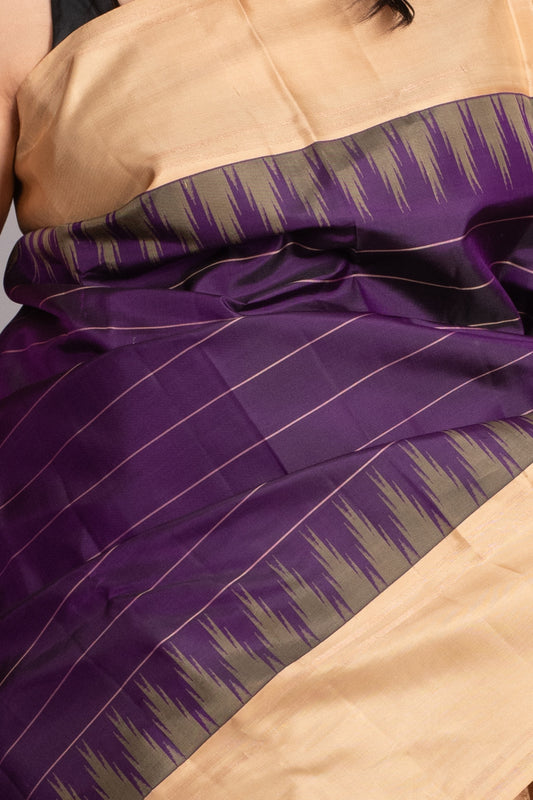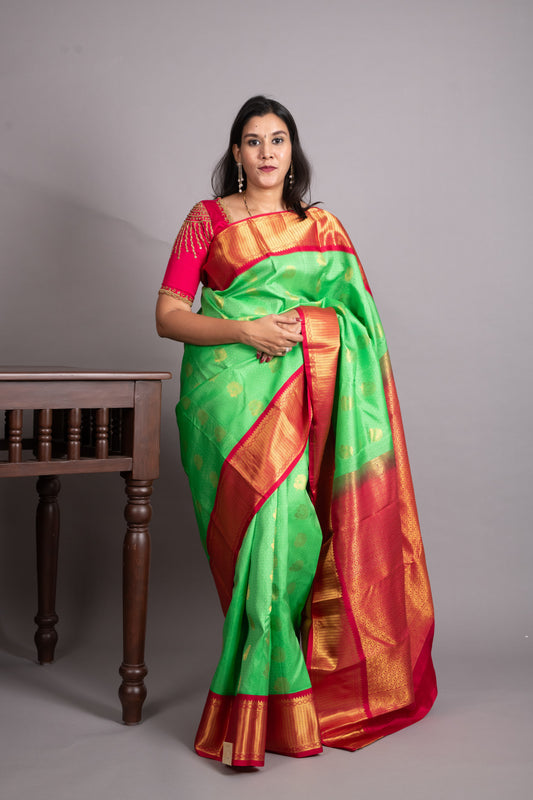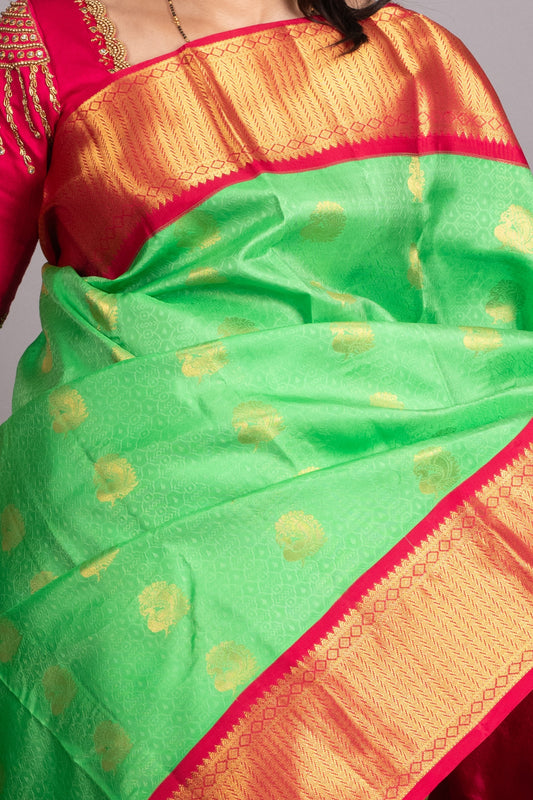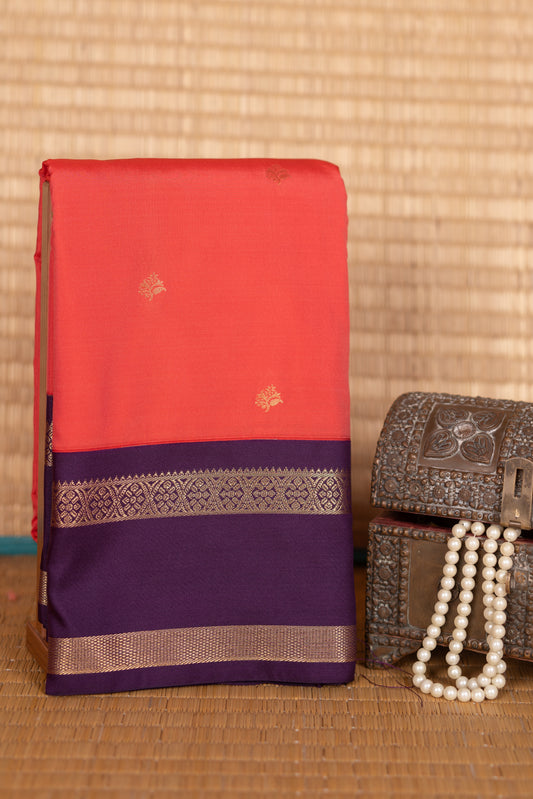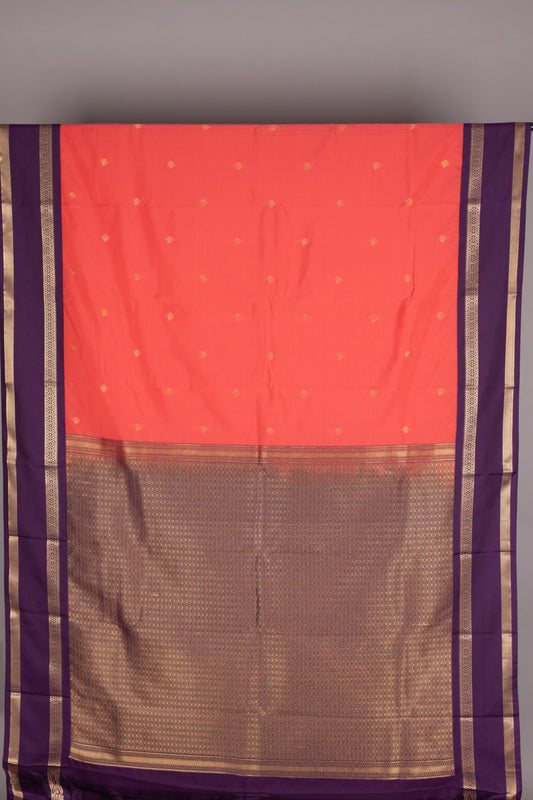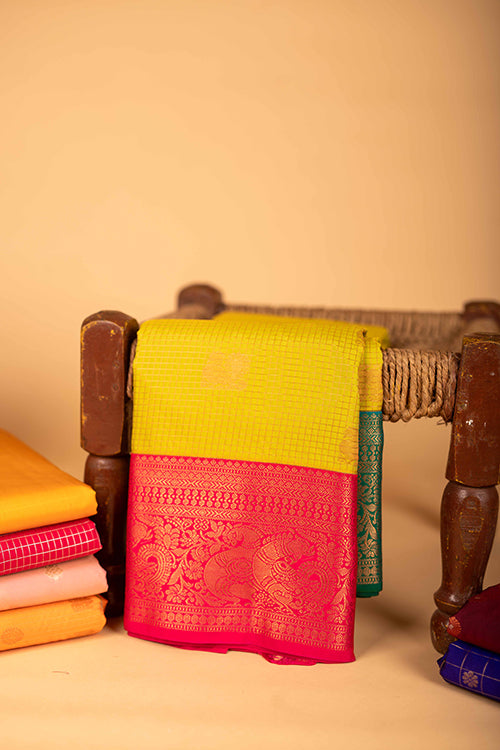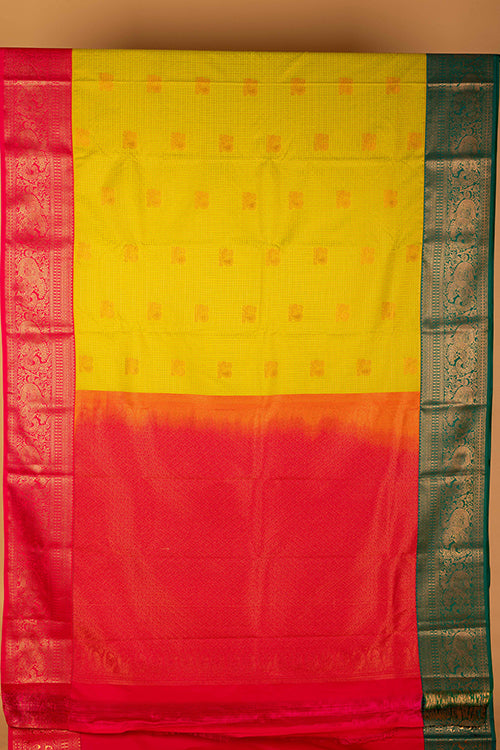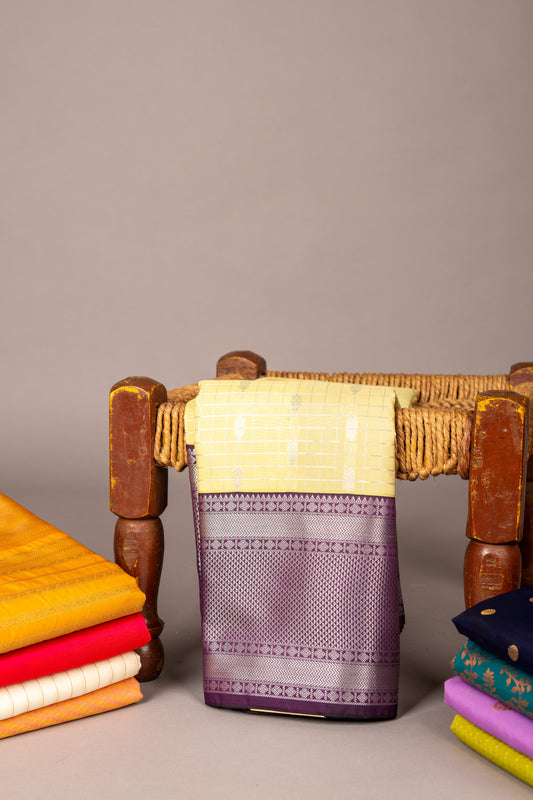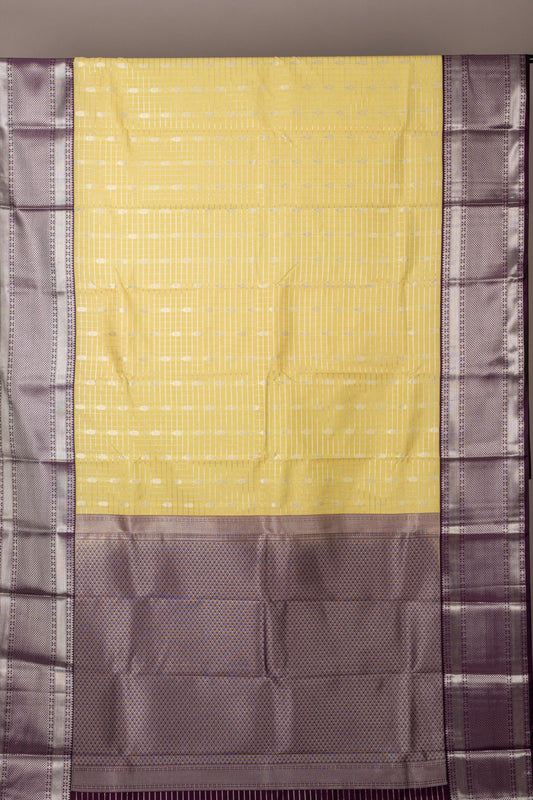Korvai weaving is a traditional technique used in South Indian silk sarees, particularly in Kanchipuram, Arani, Salem, and Madurai. The technique involves weaving the border and the body of the saree separately and then interlocking them together for every weft.
Korvai weaving involves preparing the warp and weft separately for the border and body of the saree. The warp threads are tied to the loom, and the weft threads are interlaced to create the design with technique. Once the border and the body of the saree are woven separately, they are joined together by interlocking the threads of the border and the body of the saree.
The Korvai weaving technique requires great skill and precision to ensure that the design on the border and body of the saree match perfectly. This technique is known for creating a seamless join between the border and the saree’s body, giving the saree a unique and elegant look.

History of korvai weaving
The history of Korvai weaving can be traced back to ancient South India, where skilled weavers developed and refined the technique. Korvai weaving is particularly associated with silk sarees from Kanchipuram, Arani, Salem, and Madurai, famous for their exquisite craftsmanship and intricate designs.
The tradition of silk weaving in South India dates back more than 2,000 years, and it is believed that the technique of Korvai weaving has been practised for centuries. According to legend, the technique was developed by a group of weavers who wanted to create a saree with a seamless join between the border and the body of the saree. The weavers used a special knotting technique or interlocking of threads to create this seamless join, which came to be known as Korvai weaving.
Over the years, Korvai weaving has become an integral part of the silk weaving tradition in South India. The technique has been passed down from generation to generation of weavers, and it continues to be practised by skilled artisans who specialize in creating exquisite korvai silk sarees. Today, Korvai weaving remains a symbol of the rich cultural heritage of South India and is revered by saree enthusiasts all over the world.

Types of korvai weaves
Kanchipuram Korvai:
This is the most popular Korvai weaving technique used in Kanchipuram silk korvai sarees. In this technique, the saree’s border and body are woven separately and then joined together using a distinctive knotting technique.
Arani Korvai:
This technique is used in Arani silk sarees. The border and the body of the saree are woven separately and then joined together using a technique called ‘picchika’. The picchika technique involves inserting small bits of thread between the border and the body of the saree and then knotting them together.
Salem Korvai:
This technique is used in Salem silk sarees. In this technique, the border and the body of the saree are woven separately and then joined together using a technique called ‘Korai’. The korai technique involves interlocking the border threads and the saree’s body to create a seamless join.
Madurai Korvai:
This technique is used in Madurai silk sarees. In this technique, the saree’s border and body are woven separately and then joined together using a technique called ‘thandavalam’. The thandavalam technique involves interlocking the border threads and the saree’s body in a specific pattern to create a unique design.
Highlights of Korvai weaving
- Unique technique: Korvai weaving is a unique technique used in South Indian silk sarees, which involves weaving the border and body of the saree separately and joining them seamlessly at the final stage of weaving.
- Precision and skill: Korvai weaving requires great skill and precision to ensure that the design on the border and body of the saree match perfectly. It requires meticulous attention to detail and a high level of expertise.
- Exquisite designs: Korvai weaving is known for creating exquisite designs on the border and body of the saree. The designs are often intricate and reflect the rich cultural heritage of South India.
- Elegant look: The seamless join between the border and body of the saree created by Korvai weaving gives the saree an elegant and sophisticated look. The technique is particularly popular in creating bridal sarees and other formal wear.
- Traditional art: Korvai weaving is a traditional art practised in South India for centuries. It is a testament to the region’s rich cultural heritage and is revered by saree enthusiasts worldwide.
- Handmade craftsmanship: Most Korvai sarees are handmade by skilled artisans, making them a symbol of artisanal craftsmanship and traditional skills passed down through generations.
